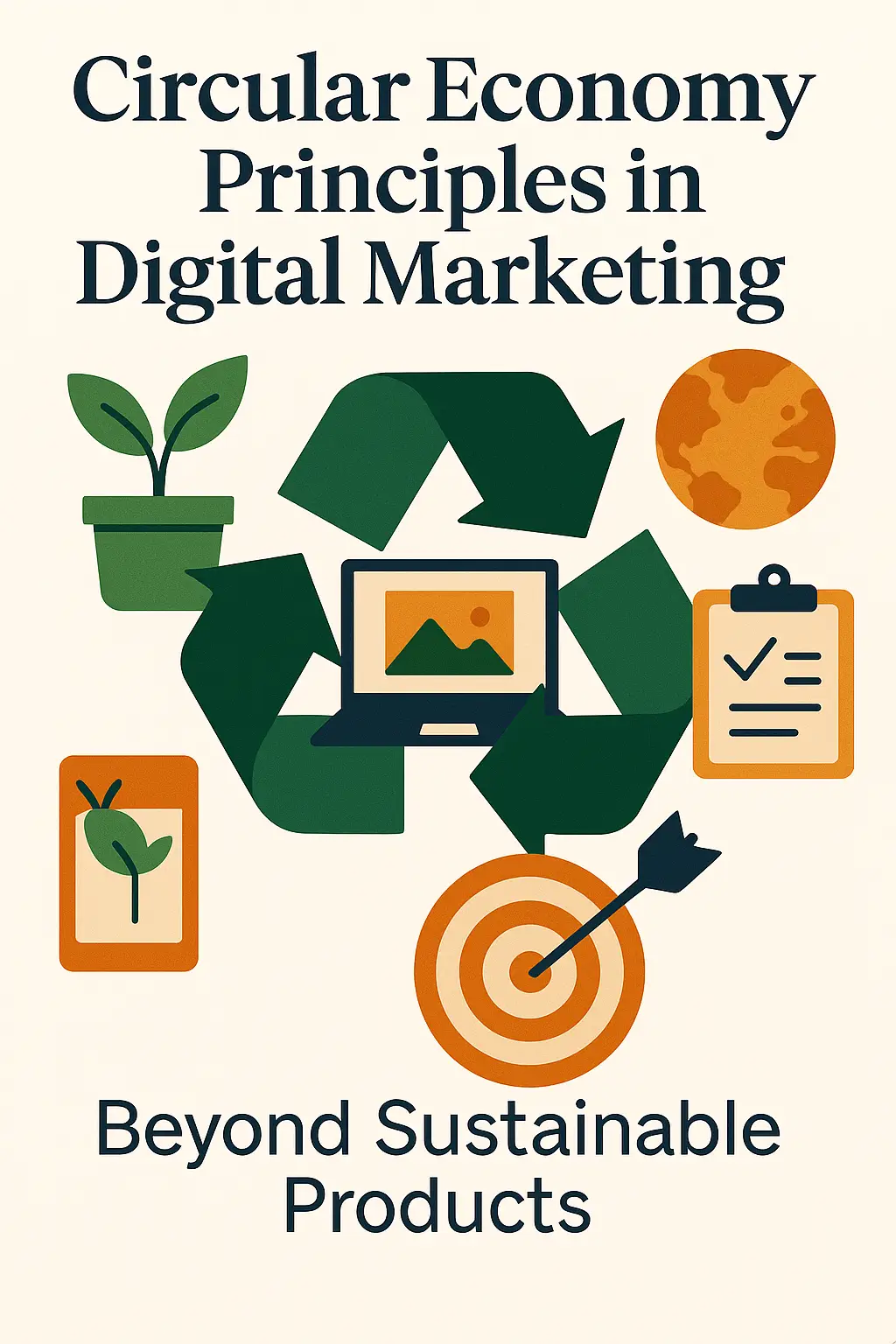In today’s eco-conscious world, sustainability is no longer limited to what a company sells—it extends to how it communicates, operates, and markets. While much has been said about sustainable products, the digital marketing ecosystem itself must evolve to align with circular economy principles.
But what does that look like? Let’s explore how digital marketers can move beyond buzzwords and embody circular values—starting with responsible data usage, resource efficiency, and promoting product longevity over planned obsolescence.
🌍 1. Responsible Data Management: Use Less, Respect More
In a circular economy, resources are used mindfully—and in digital marketing, data is the most valuable (and misused) resource.
How to do it:
- Collect only what you need: Focus on quality over quantity—don’t hoard user data “just in case.”
- Be transparent: Clearly communicate how customer data is used and allow opt-outs.
- Segment and personalize responsibly: Use data insights to provide meaningful value, not endless retargeting loops.
💡 A responsible data strategy reduces wasteful email churn and improves customer trust.
⚙️ 2. Resource-Efficient Campaigns: Reduce Digital Waste
Marketing campaigns consume more resources than many realize—from energy-hungry servers to endless cloud storage and unoptimized media files.
Sustainable tactics include:
- Optimize image and video sizes to lower page load time and reduce energy usage.
- Use minimal code and clean UX design for leaner, faster-loading pages.
- Repurpose existing content instead of constantly creating from scratch—think carousels from blogs, blog posts from webinars, etc.
📉 Less clutter = less waste = better performance.
♻️ 3. Campaigns that Promote Longevity, Not Planned Obsolescence
Traditional marketing often thrives on urgency, upgrades, and trends. But circular thinking demands we promote durability, not disposability.
Instead of “buy now,” consider:
- Highlighting product lifecycle benefits
- Offering repair, refill, or reuse programs
- Using campaigns to educate customers about maintenance and long-term value
📢 Your messaging can shift culture—championing quality and sustainability over fast consumption.
🤝 4. Partner with Circular Brands and Voices
A truly sustainable marketing strategy supports an entire ecosystem. Work with creators, influencers, and platforms that align with your values and share your vision for circular impact.
Collaboration ideas:
- Joint campaigns with eco-focused brands
- Featuring customer stories of long-term product use
- Engaging with green communities on social media
💬 These voices expand your reach while reinforcing your commitment.
🔄 5. Build Evergreen Value, Not Just Viral Attention
Quick wins fade. In circular digital marketing, the goal is to build content and campaigns that remain relevant and useful over time.
Tactics to consider:
- Focus on evergreen content like how-to guides or thought leadership pieces
- Create modular content that can be updated instead of replaced
- Invest in community platforms that create ongoing dialogue rather than one-time clicks
📚 Sustainability in marketing is about strategy, not stunts.
Conclusion: Time to Market Differently
Circular economy marketing isn’t a niche anymore—it’s becoming a competitive edge. As consumers grow more conscious and sustainability becomes the norm, digital marketers must lead the shift.
By treating attention as a resource, data as a privilege, and content as something worth curating—not consuming—you’ll not only reduce digital waste but build a brand that lasts.
🌀 The future of marketing is not just smart. It’s circular.



Leave a Reply